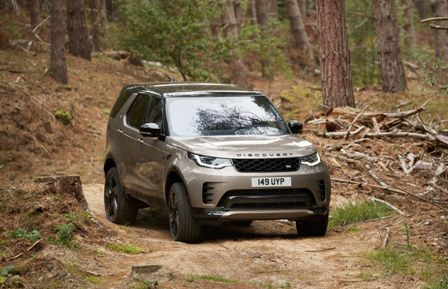Embodying resilience, evolution, and a sustained connection with families, Discovery commemorates its 35th anniversary this year.
This milestone reflects the brand’s ability to adapt to changing market demands and showcases a commitment to innovation and distinctive design solutions for evolving consumer needs.
Over three and a half decades, Discovery has consistently delivered quality and reliability. As a family adventure SUV, Discovery has fostered the joy of travel, togetherness, and exploration, making every journey memorable and meaningful. With the launch of each new generation, Discovery has evolved as a leader in the luxury off-roader segment.
Its longevity has enriched JLR’s heritage, adding depth to its narrative and brand identity. Initially introduced as an alternative to the luxury Range Rover, with a roomier, family-friendly cabin and more seating options, Discovery now stands proudly as a unique brand. It’s become the quintessential vehicle for families who cherish exploring wild places and creating lasting memories together. Discovery is a powerful symbol of automotive passion and progress, with each new model representing a pioneering continuation of a storied legacy.
Commenting, Janico Dannhauser, Product and Pricing Manager at JLR South Africa, said:“Discovery’s timeline is marked by notable achievements, ranging from mainstream successes to more niche milestones.
“As we explore these highlights, it’s clear how Discovery has not only kept pace with but often surpassed its contemporaries, setting the standard in design, functionality, and capability.”
Land Rover managing director Tony Gilroy championed the project, convinced his team could create a new kind of car for curious, active families who wanted to travel far and wide together. First launched in 1989, Discovery immediately positioned itself as an innovative addition to the 4×4 market. It combined the ruggedness expected of a Land Rover with a heightened focus on comfort and style. With a spacious interior and advanced aerodynamics, Discovery was suitable for both city driving and adventurous exploration, embodying Gilroy’s vision of a vehicle that offered comfort and efficiency previously unseen in its class.
The side-opening rear door with its mounted spare wheel echoed the Defender, as did the Alpine windows in the roof. The stepped roof was a unique and striking feature, providing additional headroom for those seated in the third row. In the early versions, these two optional seats faced each other, encouraging face-to-face conversation.
The appeal of Discovery was broadened in 1992 with the introduction of a Bahama Beige upholstery option and an automatic transmission for the 200 TDI model. In 1994, significant engine upgrades were implemented: the 2.5-litre 200 TDI and the 3.5-litre Rover V8 were replaced with brawnier versions – the four-cylinder 2.5-litre 300 TDI and the 3.9-litre Rover V8. Manual derivatives were also outfitted with a more durable R380 transmission.
The arrival of the second-generation Discovery in 1998 marked a significant leap forward for the model. Hill descent control, electronic traction control and air-suspension were introduced, technologies that bolstered its off-road capabilities while improving all-round ride comfort. These innovations underscored the commitment to enhancing the driving experience through cutting-edge engineering solutions. While still resembling the proportions of its predecessor, styling was upgraded both inside and out, and its original seven-seater configuration was retained, maintaining its edge in the segment.
Discovery embraceda new design philosophy with the launch of the third-generation model in 2004. This iteration was celebrated for its bold, modern look and sophisticated engineering, featuring an industry-first integrated body-frame construction that merged the robustness of a ladder-frame with the agility of a monocoque structure. Discovery 3 was equipped with full independent suspension, allowing for ride-height adjustment. It also boasted a suite of state-of-the-art technologies, including Land Rover’s now acclaimed Terrain Response system, which automatically adjusted the vehicle’s settings to optimize performance across a variety of driving conditions – from slick city streets to deep sand and rugged mountain tracks.
Introduced in 2009, the fourth-generation Discovery debuted with notable aesthetic updates, including redesigned light clusters and a restyled grille and bumper. This fresh look aligned it more closely with its Range Rover and Range Rover Sport stablemates, enhancing its family resemblance. Specification reforms included the addition of the optional Surround Camera System, updated instrument clusters, and comprehensive refinements to the cabin. Two years later, the Discovery Sport expanded the Discovery lineup, ensuring the ultimate family explorer vehicle now offered a range of options within its own family.




